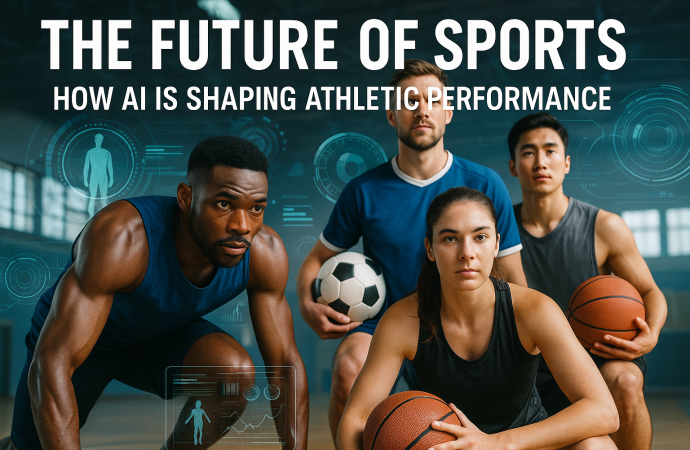Introduction Imagine a coach who, in the middle of a live game, can instantly see each player’s strength, stamina, and skills. In 2025, sports use smart computers called artificial intelligence (AI) to make this happen. Teams use easy-to-read data tools to find patterns in how players perform. Athletes train with AI that builds workouts just
Introduction
Imagine a coach who, in the middle of a live game, can instantly see each player’s strength, stamina, and skills. In 2025, sports use smart computers called artificial intelligence (AI) to make this happen. Teams use easy-to-read data tools to find patterns in how players perform. Athletes train with AI that builds workouts just for them. Even finding new talent has changed: AI-wide-ranging scouting systems look at thousands of stats to pick future stars. This article will show how AI is shaping high-quality sports so that high level games become smarter, safer, and more exciting than ever.
What Is AI in Sports?
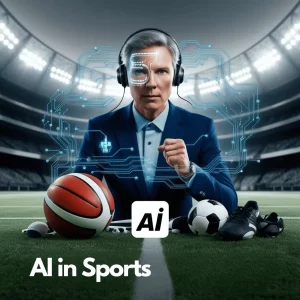
Image by: Yandex.com
Artificial intelligence in sports means using smart computer programs to study lots of game data and learn from it to gain specific goals. Instead of just looking at scores, these programs watch social media videos, track information from wearable gadgets, and check old game records. They can spot tiny changes in how an athlete moves, tell a coach when a player might get tired, or even suggest new strategies during a game. By mixing techniques like machine learning (teaching computers by example) and computer vision (helping them “see” videos), AI turns numbers into helpful advice. In 2025, these smart tools aren’t experiments anymore they’re a normal part of training, coaching, and making games more fun for fans.
Rise of AI in Sports
In the last few years, sports organizations have started using artificial intelligence to gain an edge. Teams fit athletes with wearable sensors that track speed, heart rate, and movement patterns. Coaches use AI-driven video analysis to find strengths and weaknesses in real time. Even amateur clubs now tap phone apps that offer game strategy suggestions based on past performances. This growing use shows that AI is moving quickly from the lab into every locker room and training field.
Why AI Matters for Athletic Performance
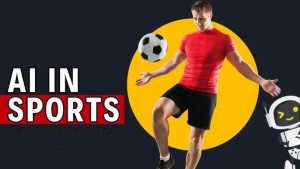
Image by: Yandex.com
Long ago, coaches used only video replays and their own experience to make decisions. Today, AI gives them live numbers on players’ speed, heart rate, and effort. This is important for four big reasons. First, it helps players get better by showing tiny details they might miss. Second, it keeps players safe by warning when they’re training too hard. Third, small teams can now use the same smart tools as top programs, making games fairer. Finally, fans enjoy cool live graphics and predictions that make watching sports more fun. In short, AI turns coaching into a mix of science and strategy that anyone can understand and use.
Benefits of AI for Athletes and Coaches
AI brings clear advantages to both players and their mentors. Athletes gain real-time performance monitoring, which helps them understand their bodies. They can see when their speed drops or when their form drifts. This immediate feedback speeds improvement. Coaches, on the other hand, get a bird’s-eye view of team performance. With sports analytics tools, they can compare individual workouts, spot trends, and tailor strategies to each opponent’s weaknesses.
Moreover, injury prevention technology reduces time lost to overuse injuries. By tracking load and recovery metrics, AI systems recommend rest when needed. This proactive approach keeps more players on the field. Finally, AI-driven scouting tools widen the talent pool. By evaluating thousands of prospects through video and statistical data, teams discover hidden gems they might otherwise miss.
Role of AI in Injury Prevention and Recovery
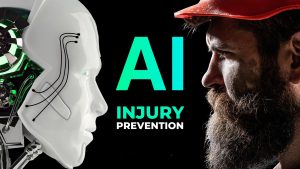
Image by: Yandex.com
Injuries can bench players and cost teams a lot of money. AI helps stop injuries before they happen. Wearable sensors and health records feed data into AI systems that spot warning signs. For instance, if a basketball player’s knee bends too much when landing, the system sends an alert. Trainers can then change exercises or add extra rest. After an injury, AI acts like a virtual coach for rehab. Motion trackers check each exercise to make sure moves are done correctly. The AI watches progress with real numbers and tweaks the program in real time. This smart approach helps athletes heal faster and return to play more safely.
Key AI Technologies Shaping Sports

Image by: Yandex.com
Several AI-driven technologies are redefining athletic key performance:
- Computer Vision Systems: High-speed cameras track every limb movement. By analyzing video frames, computer vision tools measure stride length, jump height, and even throwing angles. Coaches review these metrics to refine technique and prevent injury.
- Wearable Sensors and IoT Devices: Smart garments and wristbands collect data on heart rate, sweat levels, range of motion, and muscle activity. This continuous monitoring feeds into AI engines that alert trainers to fatigue or dehydration.
- Predictive Analytics: Machine learning models process past performances and training logs. They predict outcomes like player fatigue, risk of injuries, or optimal performance substitution times during a match.
- Virtual Reality (VR) and Augmented Reality (AR): AI enhances VR training by creating realistic scenarios. Athletes practice decision-making in virtual stadiums. AR overlays sports performance metrics onto live video, helping players correct posture or positioning in real time.
How Teams Integrate AI into Training
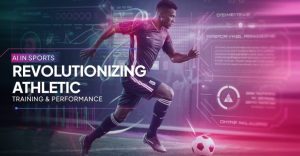
Image by: Yandex.com
Teams often try AI by first equipping a few players with simple wearables. These gadgets track heart rate, steps, and effort over weeks. Coaches, personal trainers, and analysts look at the data together. Soon, patterns appear. Maybe a midfielder’s heart rate soars in the last 20 minutes of a game. With that insight, coaches tweak drills and add rest breaks.
1. Smart Cameras for Every Move
Next, teams set up computer-vision cameras on practice fields and in gyms. These cameras record every session. AI then tags and organizes the clips. Coaches can click to review any play. They compare one player’s technique to another’s. This speeds up feedback and makes each training plan unique.
2. Predicting Game Day Plans
Finally, teams use predictive analytics before games. AI studies the other team’s style, key player stats, and past results. It then suggests the best lineups and tactics. At first, coaches test these ideas. As they see good results, they learn to trust AI more. Soon, AI feels like another coach on the staff.
Tips for Implementing AI in Athletic Programs
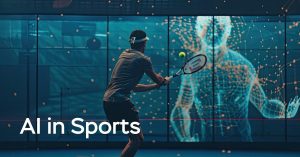
Image by: Yandex.com
Start with clear goals: decide whether you want to boost performance, reduce injuries, or improve scouting. Then, choose the right AI athletic performance platform for your budget and needs.
Train your staff on data literacy so coaches can interpret AI insights accurately. Establish protocols for data privacy to protect personal information, including secure storage and controlled access.
Monitor outcomes closely. Set key metrics such as injury rates to reduce the risk, win-loss records, or athlete satisfaction and track changes after AI adoption. Use this feedback to refine your approach.
Finally, combine AI insights with human expertise. Let veteran coaches validate AI recommendations and share contextual knowledge. This hybrid model yields the best results.
Challenges and Ethical Considerations
While AI offers clear benefits, it also raises challenges. General Data Protection Regulation and information security is a major concern. Collecting detailed personal data biometric and performance data breaches demands strict security measures. Athletes must consent and understand how AI protects data collection and stores information.
Another issue is algorithmic bias. If AI models are trained on narrow data sets say, elite male athletes they may misjudge athletes from different backgrounds or genders. Teams must ensure diverse data inputs and regular audits of AI decisions.
Finally, overreliance on AI can erode human judgment. Coaches should view AI as a tool, not a replacement for experience. Balancing data-driven insights with on-the-ground expertise ensures decisions remain well-rounded.
The Future Outlook for AI in Sports
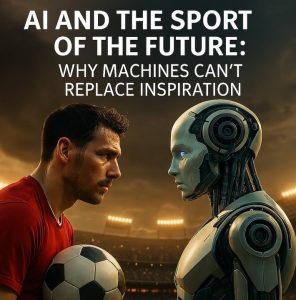
Image by: Yandex.com
Looking ahead, AI will become even more integral. Wearable sensors may shrink to skin patches or smart clothing. Models will predict long-term career trajectories and suggest tailored training regimens that evolve as athletes age.
Integration between different AI systems scouting, training, and health will create unified athlete profiles. Coaches will access a single dashboard showing everything from sleep patterns to tactical fit for each game.
On the fan side, AI-driven virtual coaching platforms may let amateur athletes learn from pros’ data protection laws. Personal training apps could adapt workouts in real time based on form detected by home cameras. The boundary between professional and personal sports technology will blur, making elite insights available to everyone for high performers.
Comparative Table: Top AI Applications in Sports
| AI Application | Main Function | Primary Benefit |
|---|---|---|
| Computer Vision Systems | Analyze movement from video feeds | Technique refinement, injury risk detection |
| Wearable Sensors & IoT | Track biometric data in real time | Personalized training, early fatigue alerts |
| Predictive Analytics | Forecast performance and injuries | Better game strategies, fewer injuries |
| VR/AR Training Tools | Simulate game scenarios | Safe skill practice, decision-making under pressure |
| AI Talent Scouting | Evaluate prospects via data | Broader talent search, unbiased selection |
This table shows how each AI technology supports different aspects of athletic performance.
Conclusion
Artificial intelligence in sports is no longer science fiction. From sports analytics tools and personalized training AI to injury prevention technology and AI talent scouting, these innovations reshape how athletes train, compete, and recover. Coaches gain real-time insights, players improve faster, and fans enjoy richer experiences. Yet teams must navigate data privacy and bias while keeping human expertise central. As AI and athletics merge, the future of sports promises smarter strategies, safer play, and greater inclusivity—both on the field and in the stands.
Call to Action
Curious how AI can elevate your team’s performance? Explore our AI sports platform today and unlock the next level of athletic excellence!

